First manned underwater dive of NSYSU’s developed MIT small submarine in Kaohsiung Harbor accomplished
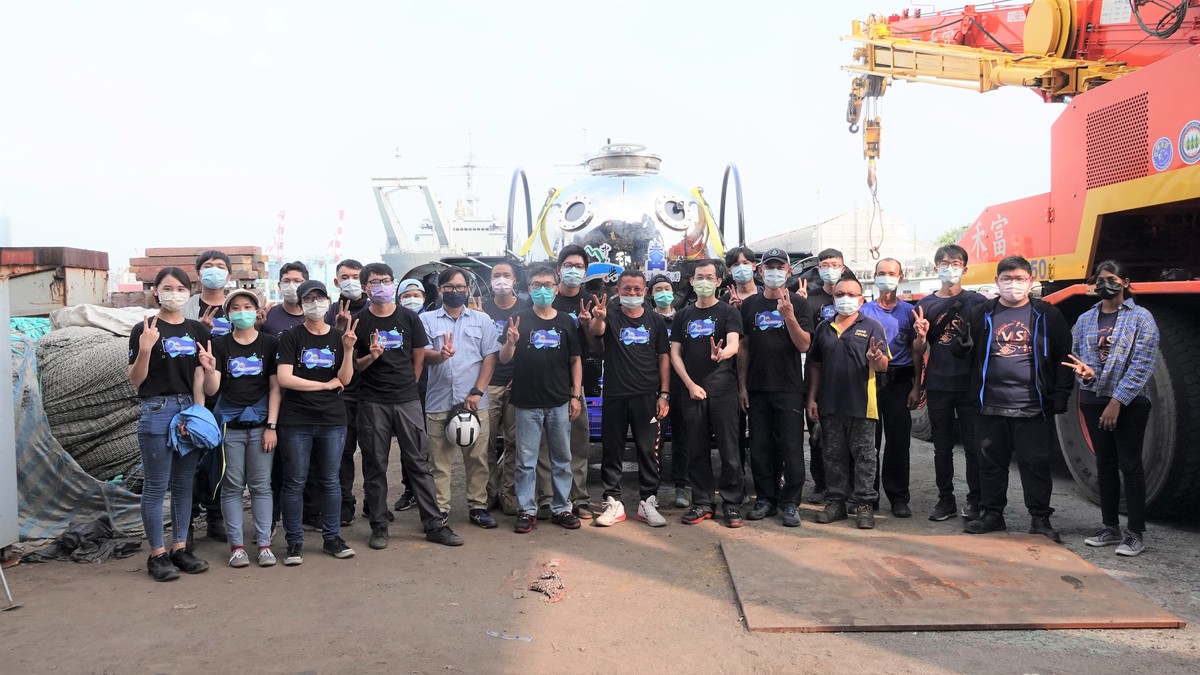
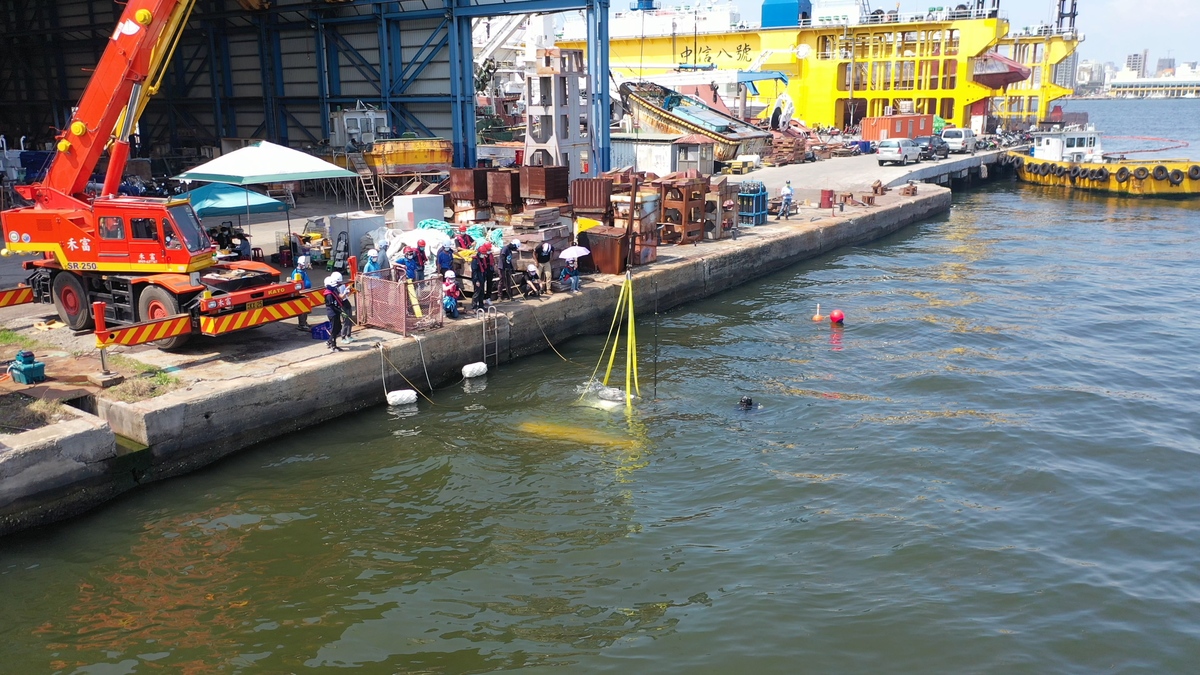
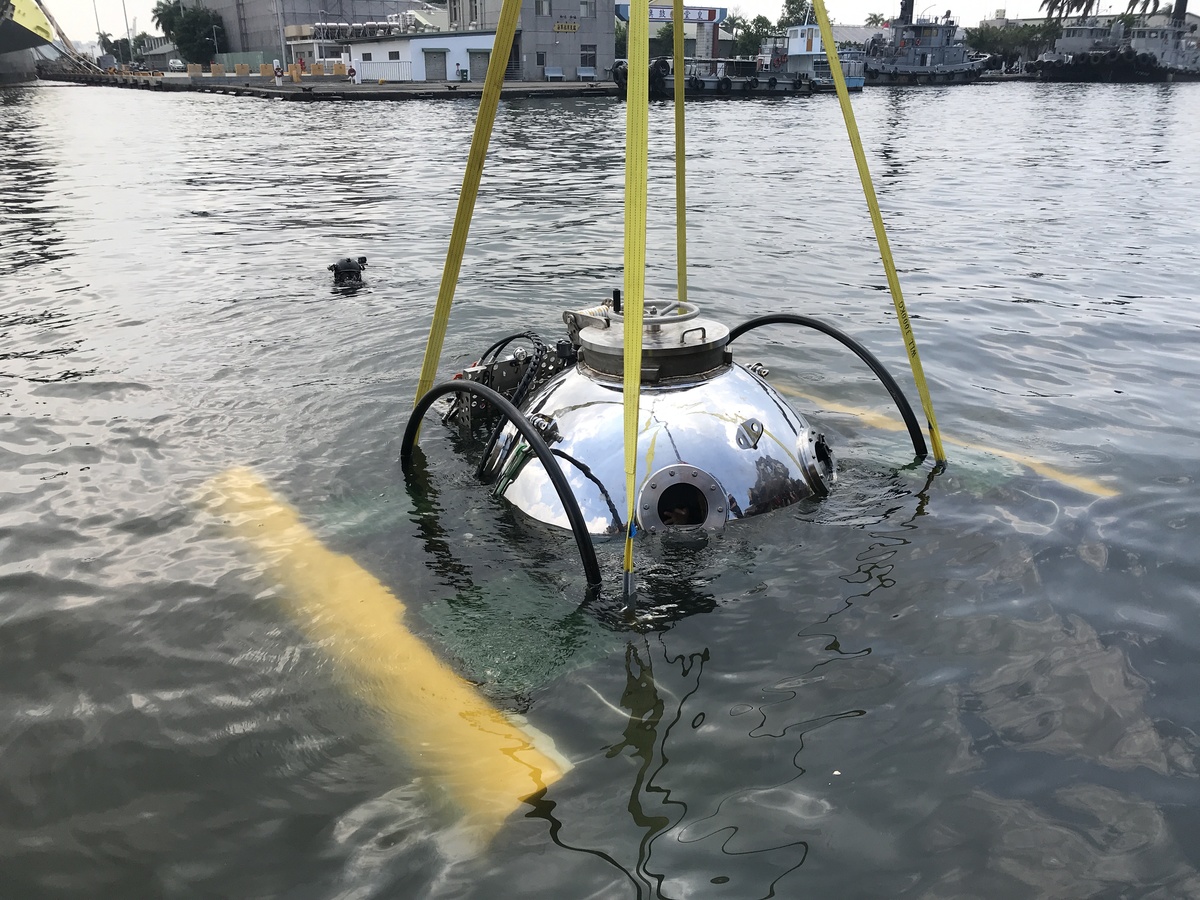
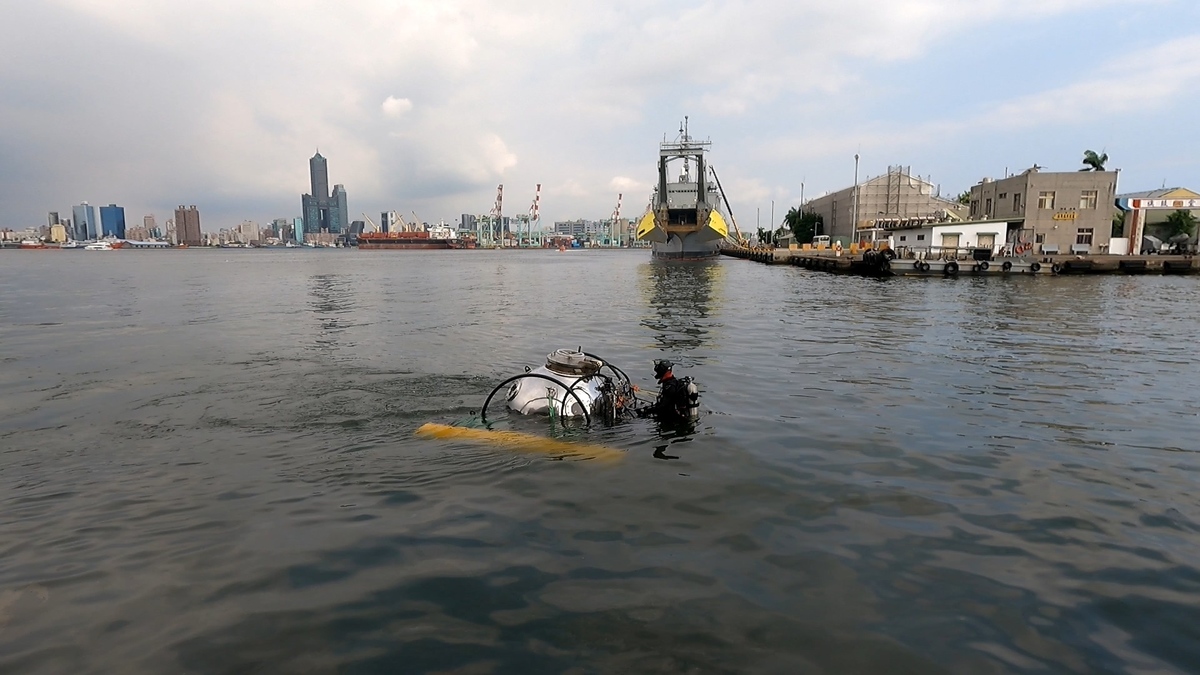
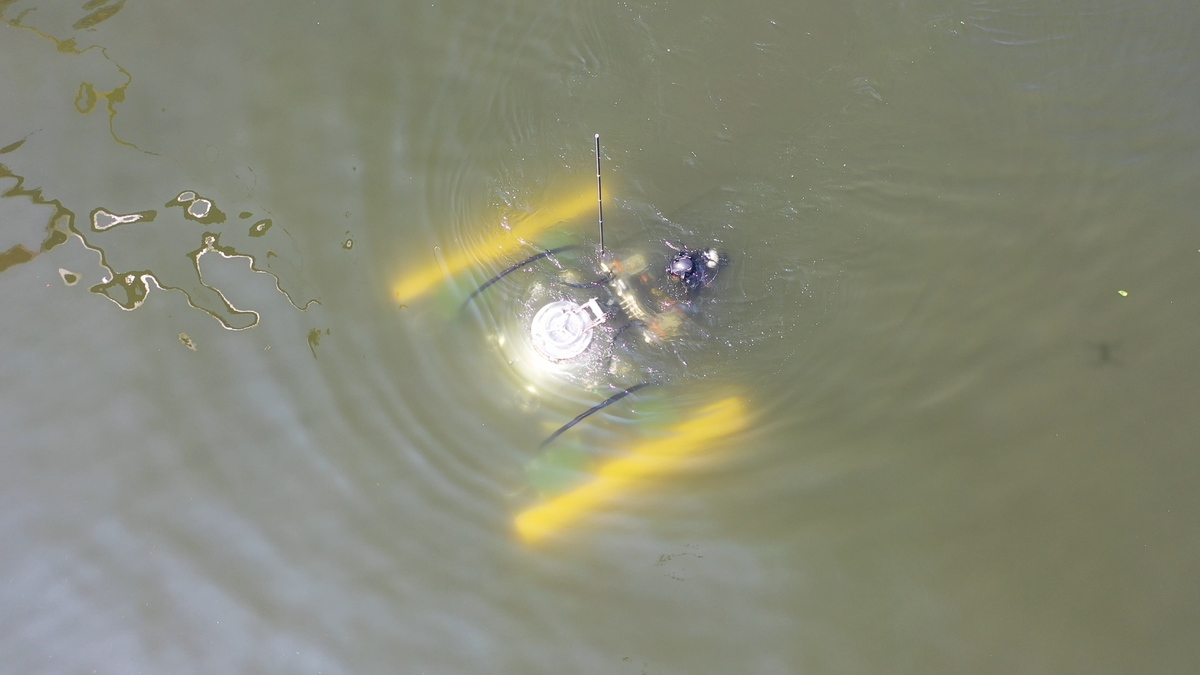
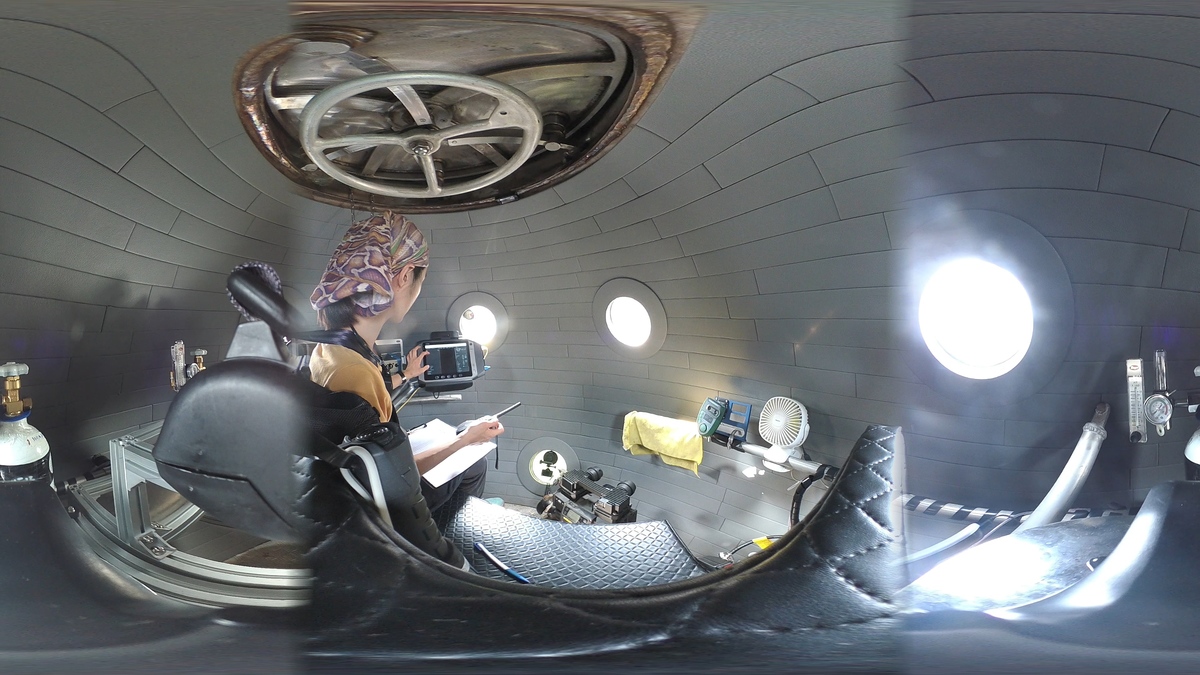
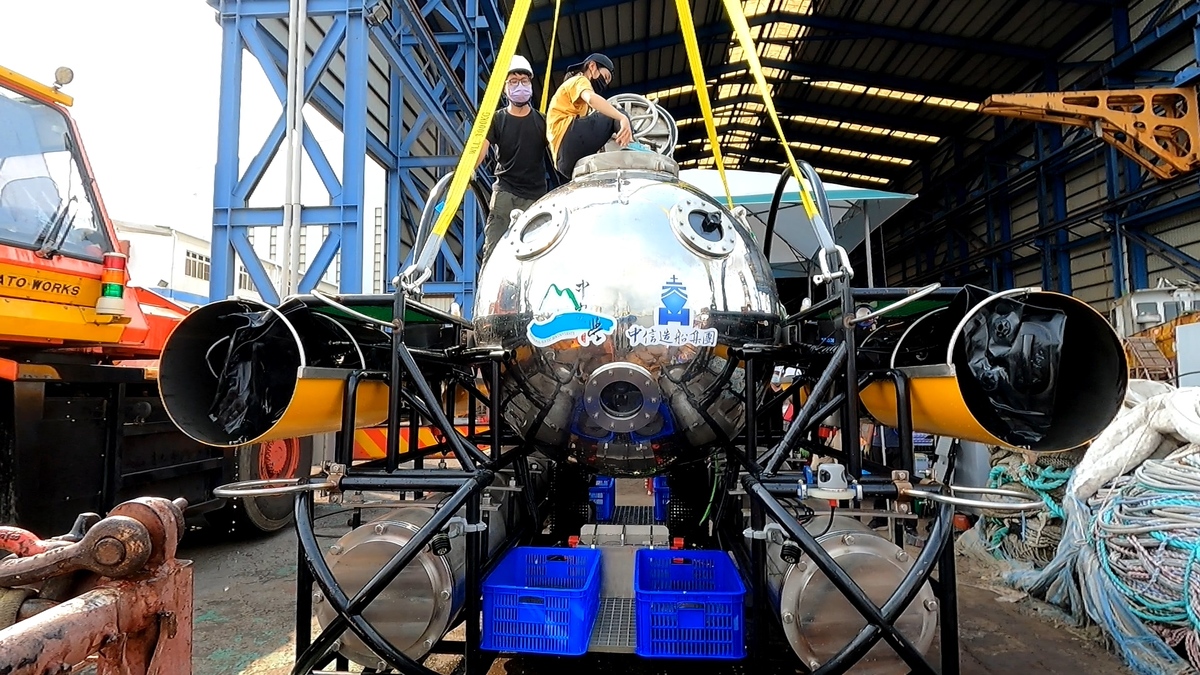
2021-10-04
The manned underwater vehicle (MUV) for scientific research developed by NSYSU Underwater Vehicle R&D Center completed its first manned underwater dive in the shipyard of Jong Shyn Ship-building Group located in Kaohsiung Harbor reaching a depth of 5~8 meters to the bottom of the harbor, testing its life-supporting system and first cruise at a fixed depth. NSYSU President Ying-Yao Cheng emphasized that the first MIT (made in Taiwan) small submarine was developed by an R&D alliance led by NSYSU with system design and entered the stage of manned submersion for exploration and research. This will open up infinite possibilities for Taiwan's underwater “blue technology”.
The first MIT underwater manner vehicle developed by NSYSU, though small in volume for a submarine, has everything it needs. The metal manned cabin in the center can fit two pilots. With a net weight of 3.7 tons, which will be weighted as 4.2 tons if all the sub-systems are equipped, the MUV looks like a giant robot. Its stainless steel frame securely protects the electric power system and thrusters for vertical and horizontal maneuvering. The MUV is designed aiming at a dive depth up to 500 m and its battery and life support system can last for 8 hours. The vehicle has an emergency rescue design that allows quick air bag inflation, quick releasing of extra heavy loads, and resurfacing by emergency power.
Director of NSYSU Underwater Vehicle R&D Center, Prof. Chua-Chin Wang, said that the previous test of the MUV in the open waters around the Anping Port in Tainan was conducted without personnel inside the cabin: instead, divers wearing diving suits and equipment stayed around the outer stainless steel frame of the vehicle and operated the dashboard to complete the powered navigation test of the MUV at the depth of 8 m. This test in Kaohsiung Harbor was the first time that a pilot sits inside the cabin and operates measurement instruments. Thanks to the strong support by Jong Shyn Ship-building Group, including shipyard equipment and logistic, the test turned out to be a great success. He emphasized that this has been the most difficult test to date, testing the functioning of the life support system while the researcher, namely the pilot inside, performs research activities in the cabin. To ensure the safety of the pilot, the R&D team let the personnel inside the cabin repeatedly tested the operation of the life support system on land before this serious dive test. Only after the assigned pilot became familiar with the whole system, the team conducted the dive in the harbor in the Jong Shyn Shipbuilding Group shipyard.
On the day of the field test, after the vehicle submerged, the external pilot started operating the submarine immediately and dived vertically to a depth of 5 m, diving and resurfacing several times, and then allowing the pilot to pop inside the cabin. The pilot spent nearly one hour on the bottom of the harbor, and confirmed the normal operation of the self-sustained life support system. After the crew and the vehicle resurfaced safely, the R&D team on the shore witnessed this historic moment and shouted “YES!”. Next was the fixed depth cruise test: the MUV navigated at a fixed depth under the surface of the water to test the safe operation of the power system at different depths. Director Wang emphasized that the completion of these two tests means that the submarine is ready to perform manned diving operations and stable underwater navigation cruising. These tests marked another key milestone in the R&D of MIT submarine developed and built by NSYSU.
“The R&D team plans to conduct another round of test close to the coast line of Little Liuchiu Island next month.” Director Wang said that after the success of this test in the port, the underwater vehicle R&D team of NSYSU, including Director of Taiwan Ocean Research Institute, Professor Chau-Chang Wang, Institute of Undersea Technology (IUT) professors: Hsin-Hung Chen, Linus Yung-Sheng Chiu, and Yu-Cheng Chou, plan to conduct a manned submersible open water trial close to Little Liuchiu Island, Pingtung County, and take on the challenges of the open sea: the wind, waves, and currents affecting the maneuverability and safety; the team hopes to reach a depth of up to 20 meters. If the next test run is completed successfully, it will be another whole new page in Taiwan's underwater technology.
The manned underwater vehicle (MUV) for scientific research developed by NSYSU Underwater Vehicle R&D Center completed its first manned underwater dive in the shipyard of Jong Shyn Ship-building Group located in Kaohsiung Harbor reaching a depth of 5~8 meters to the bottom of the harbor, testing its life-supporting system and first cruise at a fixed depth. NSYSU President Ying-Yao Cheng emphasized that the first MIT (made in Taiwan) small submarine was developed by an R&D alliance led by NSYSU with system design and entered the stage of manned submersion for exploration and research. This will open up infinite possibilities for Taiwan's underwater “blue technology”.
The first MIT underwater manner vehicle developed by NSYSU, though small in volume for a submarine, has everything it needs. The metal manned cabin in the center can fit two pilots. With a net weight of 3.7 tons, which will be weighted as 4.2 tons if all the sub-systems are equipped, the MUV looks like a giant robot. Its stainless steel frame securely protects the electric power system and thrusters for vertical and horizontal maneuvering. The MUV is designed aiming at a dive depth up to 500 m and its battery and life support system can last for 8 hours. The vehicle has an emergency rescue design that allows quick air bag inflation, quick releasing of extra heavy loads, and resurfacing by emergency power.
Director of NSYSU Underwater Vehicle R&D Center, Prof. Chua-Chin Wang, said that the previous test of the MUV in the open waters around the Anping Port in Tainan was conducted without personnel inside the cabin: instead, divers wearing diving suits and equipment stayed around the outer stainless steel frame of the vehicle and operated the dashboard to complete the powered navigation test of the MUV at the depth of 8 m. This test in Kaohsiung Harbor was the first time that a pilot sits inside the cabin and operates measurement instruments. Thanks to the strong support by Jong Shyn Ship-building Group, including shipyard equipment and logistic, the test turned out to be a great success. He emphasized that this has been the most difficult test to date, testing the functioning of the life support system while the researcher, namely the pilot inside, performs research activities in the cabin. To ensure the safety of the pilot, the R&D team let the personnel inside the cabin repeatedly tested the operation of the life support system on land before this serious dive test. Only after the assigned pilot became familiar with the whole system, the team conducted the dive in the harbor in the Jong Shyn Shipbuilding Group shipyard.
On the day of the field test, after the vehicle submerged, the external pilot started operating the submarine immediately and dived vertically to a depth of 5 m, diving and resurfacing several times, and then allowing the pilot to pop inside the cabin. The pilot spent nearly one hour on the bottom of the harbor, and confirmed the normal operation of the self-sustained life support system. After the crew and the vehicle resurfaced safely, the R&D team on the shore witnessed this historic moment and shouted “YES!”. Next was the fixed depth cruise test: the MUV navigated at a fixed depth under the surface of the water to test the safe operation of the power system at different depths. Director Wang emphasized that the completion of these two tests means that the submarine is ready to perform manned diving operations and stable underwater navigation cruising. These tests marked another key milestone in the R&D of MIT submarine developed and built by NSYSU.
“The R&D team plans to conduct another round of test close to the coast line of Little Liuchiu Island next month.” Director Wang said that after the success of this test in the port, the underwater vehicle R&D team of NSYSU, including Director of Taiwan Ocean Research Institute, Professor Chau-Chang Wang, Institute of Undersea Technology (IUT) professors: Hsin-Hung Chen, Linus Yung-Sheng Chiu, and Yu-Cheng Chou, plan to conduct a manned submersible open water trial close to Little Liuchiu Island, Pingtung County, and take on the challenges of the open sea: the wind, waves, and currents affecting the maneuverability and safety; the team hopes to reach a depth of up to 20 meters. If the next test run is completed successfully, it will be another whole new page in Taiwan's underwater technology.
Click Num:
Share
